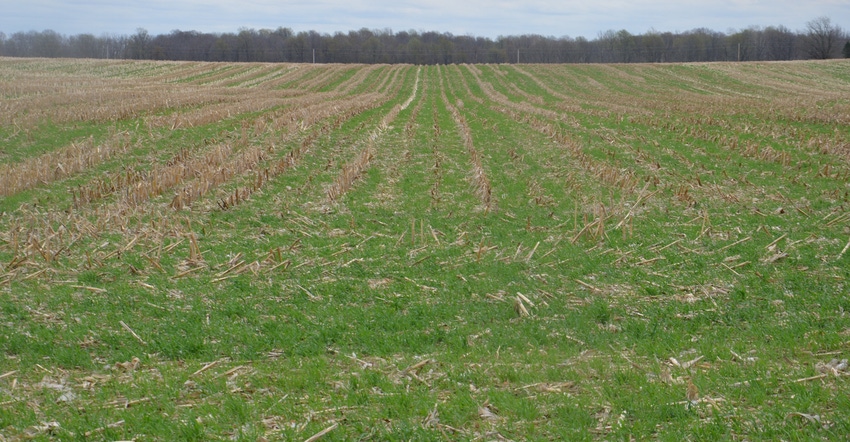
Throughout Indiana, acres of cover crops will soon be growing. A few of the fields that will include cover crops are enrolled in a program initiated through a joint effort involving the Indiana State Department of Agriculture, the Indiana Soybean Alliance and Indiana Corn Marketing Council, and Truterra LLC, the sustainability arm of Land O’Lakes Co-op. In Indiana, growers who are participating will receive guidance from either Premier Cos. or Ceres agronomists, depending upon where they farm. Both these co-ops work with the Truterra sustainability platform.
Once the idea grew legs, the natural fit was to operate it through ISDA’s INfield Advantage program, says Bruce Kettler, ISDA director. INfield Advantage has operated for several years, allowing farmers who volunteer to participate to be a part of nitrogen use efficiency trials. These are conducted by farmers throughout the state, giving them a chance each year to see what they can learn about practices that fit their farm. Adding cover crops as part of that program just makes sense, Kettler says.
“Partnerships are key for the INfield Advantage program, and ISDA is proud to work with organizations focused on assisting farmers as well as increasing soil health,” Kettler says. He adds that this new effort, now underway with growers across Indiana, opens new opportunities for farmers and landowners who want to learn more about how they can conserve soil and nutrients on their land.
How it works
Farmers enrolled earlier in the summer. ISDA reports that there was significant enrollment for the first full rollout of this cover crop program. The program was open to farmers new to planting cover crops, or who plant cover crops infrequently.
INfield Advantage programs involve field trials that compare one practice to another. Each grower was provided with 20 acres of cover crop seed courtesy of a grant and support from the Indiana commodity groups. The overall field size was required to be at least 40 acres so that 20 acres of cover crops could be compared to 20 acres not seeded to cover crops through the INfield Advantage program.
What Truterra brings to the table through agronomists with Ceres and Premier is the opportunity to use the Truterra Insights Engine sustainability tool, spokespersons say. This software helps benchmark current practices for each producer. Then, it helps track improvement over time where the cover crop is planted vs. where it is not in the split-trial field.
Combining what growers can learn using this tool with what they learn through discussions as a part of INfield Advantage should help first-time cover crop growers gain more insight about what it takes to make the practice work, Kettler says.
About the Author(s)
You May Also Like




